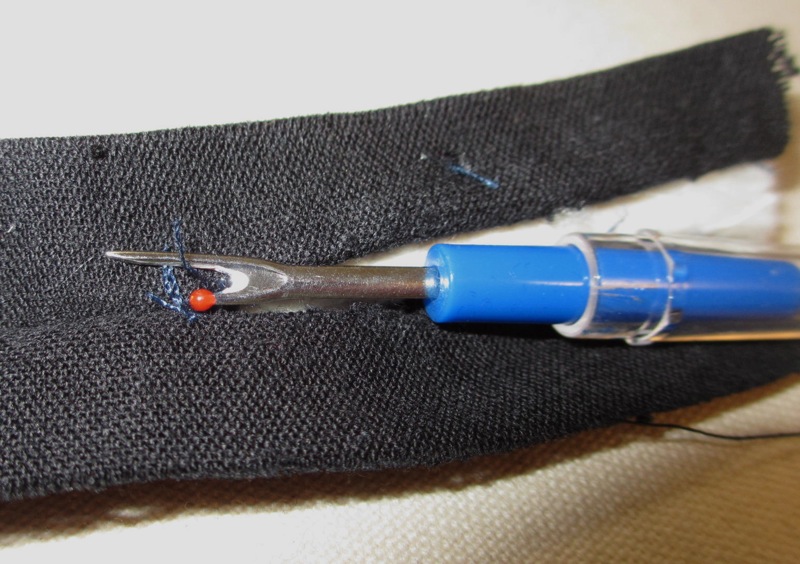Matching a print is done quite often when sewing with decorator fabric. Making draperies and bedspreads you need large pieces of fabric and the print needs to match across the whole project. But matching the print is also needed on small valances, pillows and sometimes in a garment. When using a quality decorator fabric the print repeat from one edge of the fabric to the other is made to match up with another width of fabric.Using a quilting or dress fabric, matching a print repeat can take a little more work.
Sewing the pieces together can be difficult to see if you place the fabric with the right sides together and stitch on the wrong side. Here is a simpler way to match the print and still see what you are sewing.
You still want to lay your fabrics right sides together. With this embroidered print it is not as obvious which side is the wrong side. I mark my fabric pieces with blue painter’s tape so I know which side is the right side and which edge is the top.
To match the print and still see what you are doing, fold back the edge of the top fabric to a place that makes sense to match up the pattern.
Line up the print and pin it in place.
Take your pinned fabric to the sewing machine and stitch on top.
You are able to see that the print still matches, nothing is shifting and the bulk of your fabric is to the left of the machine.
Take your stitched pieces back to the table and press first on the wrong side where you just stitched. Then open the seam and press on the right side.
Now you have a beautifully matched seam.
Have fun.

























